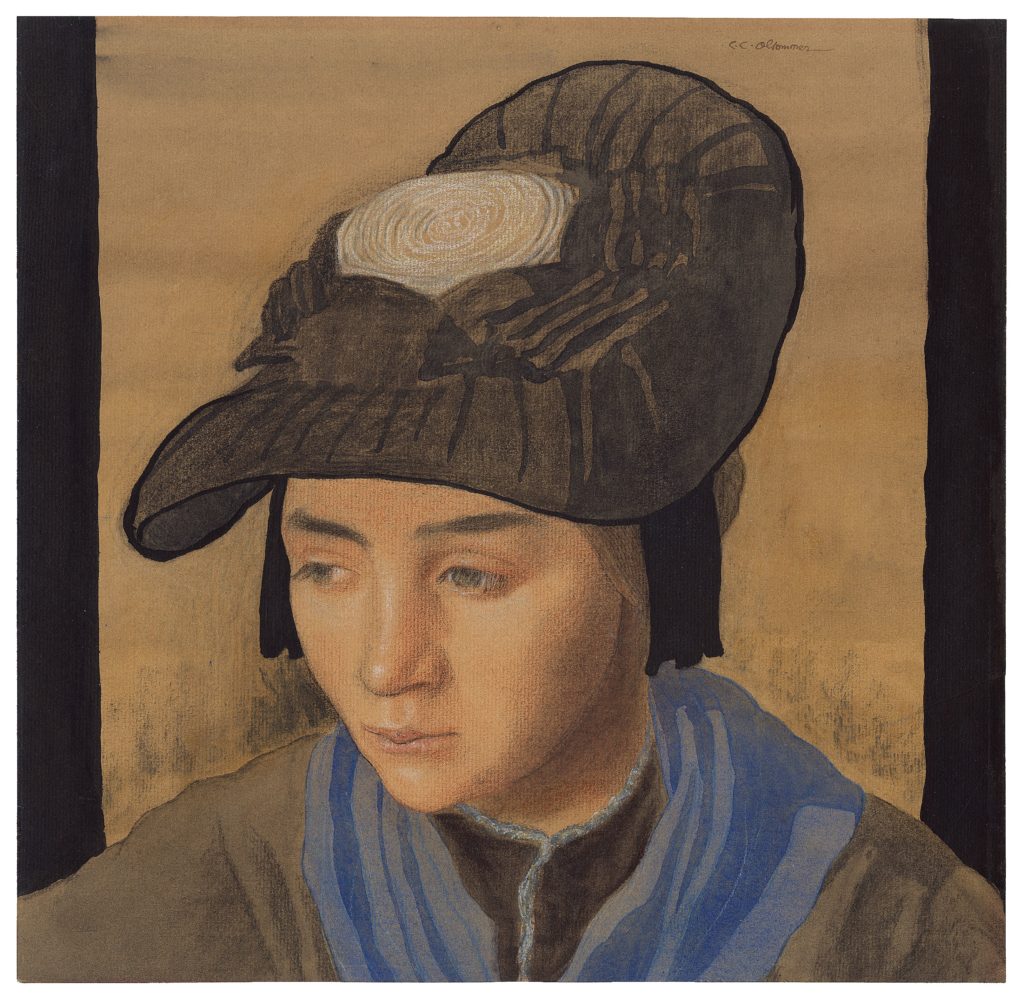A most lovely portrait by Charles Clos Olsommer. This young woman seems immersed in a moment of melancholy, staring into space, and inspiring tranquillity. The absence of background and the black columns partitioning the space – bringing all the attention to her gaze – deprive the model from context and make her look like an allegory, or an icon. Her clothes, however, reveal her reality. She wears one of the traditional costumes of central Valais, Switzerland: a woollen jacket, a shawl over her shoulders and a straw hat, covered with black velvet and topped with pleated ribbons. Olsommer portrayed several women wearing the same black hat and blue scarf, demonstrating his attachment to the traditional culture, as well as his attraction for the powerful aesthetic combination and contrast created by these two elements of colour, framing the pale and pinkish face of the women. It has clearly an echo to the school of Pont-Aven.
At the end of the 19th century, the Swiss canton of Valais hosted many Swiss artists in search for tranquillity, away from modern cities. These artists, often sensitive to the Symbolist movement, objected positivism and perceived a loss of spirituality in both the development of cities and the decline of rural world. Looking for mysticism and contact with nature, they undertook a retreat in the countryside to share the daily life of the peasants in which they found a form of asceticism. At that time, the wild landscapes of the Swiss mountains appeared as an immaculate earthly paradise as well as a picturesque setting.
Around 1890, a group of young artists spent each summer in Savièse (Valais), following the painter Ernest Biéler. They produced works inspired by the local population and the landscapes, confirming a place for rural life in Swiss modern arts and participating in the constitution of a national art. These artists covered a variety of styles but shared a common iconography, including the daily religious or pastoral activities, the community life, the exaltation of maternity, and religious subjects transposed into the familiar context of Valais. Olsommer is part of the extension of this movement. First trained at the Kunstgewerbeschule in Munich (1902–03) and at the École des beaux-arts in Geneva (1904–05), Olsommer moved to Valais in 1912. His work, mainly on paper and often using mixed techniques, shares characteristics of the Jugendstil: plain backgrounds, flatness of the forms, inspiration from the decorative arts and clarity of the line.






